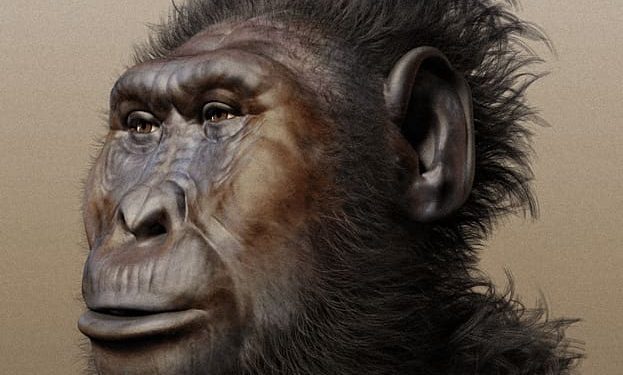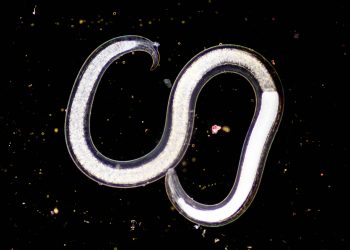Newly discovered fossils in Kenya reveal that Paranthropus boisei, once thought to be a simple plant eater, had hands and feet strikingly similar to those of humans, rewriting its place in human evolution. (CREDIT: Cicero Moraes / CC BY-SA 4.0)
For decades, Paranthropus boisei, an early hominid that roamed East Africa a million years ago, was known for its gigantic jaw and powerfully built biting muscles. His diet of coarse grasses and reeds earned him the nickname “Nutcracker Man,” but the rest of his skeleton remained a mystery.
Now, newly discovered fossils in Kenya’s Turkana Basin are giving scientists their first up-close look at the hands and feet of this ancient relative and revealing a species far more dexterous and terrestrial than expected.
A million-year-old puzzle piece
Between 2019 and 2021, researchers led by paleoanthropologist Carrie Mongle of Stony Brook University discovered fossil remains near the Koobi Fora in Kenya. The bones, labeled KNM-ER 101000, date to around 1.52 million years ago. They consist of hand and foot components found side by side, as well as skull and tooth remains clearly from Paranthropus boisei. For the first time, scientists were able to confidently identify these body parts as belonging to a single individual.

Satellite map of the Turkana Basin region showing the geospatial location of excavation site KNM-ER 101000. (CREDIT: Nature)
Until now, debates raged over whether this species, long considered a close relative of early Homo, used or made tools. The absence of a hand bone had left the question doubtful. Some have assumed that all early hominids were tool users; others have speculated that Paranthropus might be an exception. With these fossils, this doubt fades.
A hand designed for strength and skill
When scientists reconstructed the hand, they discovered an interesting combination of features. The thumb was long, as in modern humans, to allow precise movements such as pinching or grasping small objects. But the bones were strong and sturdy, like those of gorillas. The joint at the base of the thumb and wrist bones were extremely robust, suggesting a grip capable of generating incredible pressure.
“The most surprising part,” Mongle said, “was how many ways this hand was similar to ours.” Proportions (long thumb, short fingers, and flexible little finger) predict the ability to hold objects well and shape them accurately.
But the hand was not as advanced as that of later Homo species. Its articulations suggest that P. boisei may not have been able to develop the same precision to make fine tools. But the physical capacity was there. The structure of the hand “suggests a certain gripping capacity that would have allowed the use of tools”, whose movements were “more functional than technological”, explains Samar Syeda of the American Museum of Natural History.

Reconstructed left hand of KNM-ER 101000. Palmar (left) and dorsal (right) views. (CREDIT: Nature)
Walking upright on the African plains
Fossil feet, for example, in the case of a strong big toe and a very preserved metatarsal, tell a different story: that of confident bipedal walking. The big toe was angled to push off the ground, with the midfoot exhibiting a structural twist that supported strong, arched walking. These are signs of a creature adapted to walking upright on the ground, although it may still be capable of climbing.
With a well-defined arch and a flat joint surface, this foot was not that of a forest dweller. Instead, it involves that of a hominid at home on the savannah, grazing between food plots or darting to the edge of lakes.
The discovery also characterizes Paranthropus as a wacky and less than delicate plant eater. Its sturdy hands could have had a multitude of uses other than eating tough plants. Researchers think it might have used rocks to crack open large seeds or remove bark, heavy, synchronized actions.
Almudena Estalrrich of Spain’s National Museum of Natural Sciences notes that muscle marks on the hand “testify to intense use, both for locomotion and for food provisioning.” This suggests that P. boisei was more versatile than previously thought, with physical strength and nimble hands.

Summary of ancestral state reconstructions highlighting key transitions inferred in the evolution of the hominid hand. (CREDIT: Nature)
Land shared with early humans
These fossils also confirm that Paranthropus boisei and early Homo coexisted more than a million years ago. Previous footprints left in the volcanic ash had already indicated this. Today, KNM-ER 101000 offers concrete evidence that these two species – one herbivorous and dependent on brute force, the other using tools and experimenting with meat – lived on the same planet at the same time.
Adrián Pablos, of the Spanish National Center for Human Evolution, explains that this discovery “changed the perspective we had for this species and allows us to think about it in a more human way and less about something else.” This discovery discredits the long-held belief that tool use or manual skill was the mark that differentiated Homo from other hominins.
The fossils also provide clues to the nature of the last common ancestor of Homo and Paranthropus. Hand proportions show that early hominids already had large thumbs and sturdy grips before they split during evolution. Homo then refined these characteristics by developing the advanced wrist and finger systems that would be necessary to make sophisticated tools.

Diagnostic craniodental elements of the KNM-ER 101000 presented in anatomical position against a silhouette of the reconstructed OH 5 skull. (CREDIT: Nature)
For scientists, this discovery shows how evolution did not proceed in a straight line between the primitive stage and the advanced stage. Rather, it was a complex web of adjustments – some shared, some variable – that existed in both time and space. “What was once taken for granted is now under new scrutiny with new data and methods,” Estalrrich explained.
Practical implications of the research
In addition to rewriting textbooks, the discovery of KNM-ER 101000 improves our knowledge of what makes Homo sapiens unique. This demonstrates that dexterity and tool use did not appear suddenly but developed gradually through experimentation with several hominid species.
For evolutionary biology and anthropology, the fossil offers an unusual opportunity to observe how the coevolution of anatomy and behavior occurred – how a species was able to develop a field economy and manipulative power without having yet perfected the technology.
Finally, it reminds us that human evolution has been a group experience, shaped by many hands before ours.
The research results are available online in the journal Nature.
Related Stories
Do you like these kinds of feel-good stories? Receive the newsletter on the right side of the news.









